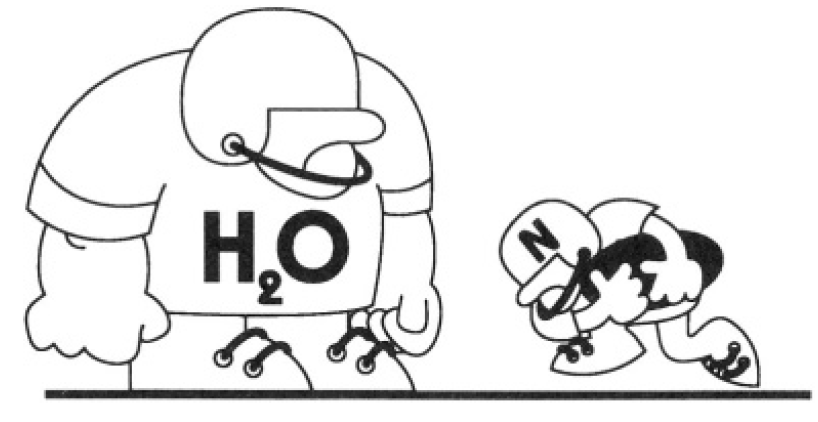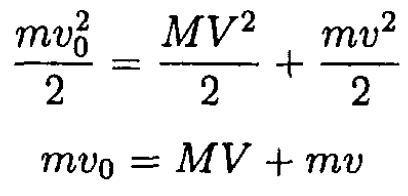
Neutron Scattering
 المؤلف:
Sidney B. Cahn And Boris E. Nadgorny
المؤلف:
Sidney B. Cahn And Boris E. Nadgorny
 المصدر:
A GUIDE TO PHYSICS PROBLEMS
المصدر:
A GUIDE TO PHYSICS PROBLEMS
 الجزء والصفحة:
part 1 , p 13
الجزء والصفحة:
part 1 , p 13
 28-7-2016
28-7-2016
 1534
1534
Neutron Scattering
Neutrons can easily penetrate thick lead partitions but are absorbed much more efficiently in water or in other materials with high hydrogen content. Employing only classical mechanical arguments, give an explanation of this effect (see Figure 1.1).

Figure 1.1
SOLUTION
Consider a neutron colliding with atoms of a certain type. In each collision, neutrons lose a fraction of their kinetic energy; let us calculate this fraction. We will assume that the collision is elastic and central. From energy and momentum conservation,

where m and M are the masses of the neutron and the atom, respectively; v0 and v are the initial and final velocities of the neutron; V is the velocity of the atom after the collision. These equations may be rewritten in the form

Solving for V gives

letting α = M/m. The kinetic energy of the atom after collision is

where T0 is the initial kinetic energy of the neutron. Obviously, as α → 0 or ∞, TA → 0. The maximum of TA as a function of α corresponds to the minimum of (α + 2 + 1/α) So we have α = 1(α positive). Here, m = M and the kinetic energy of the atom as a result of the collision will be a maximum TA = T0. For hydrogen, α = MH/m is very close to 1 and this explains why materials with high hydrogen content are so efficient in blocking the neutrons.
 الاكثر قراءة في مواضيع اخرى
الاكثر قراءة في مواضيع اخرى
 اخر الاخبار
اخر الاخبار
اخبار العتبة العباسية المقدسة


